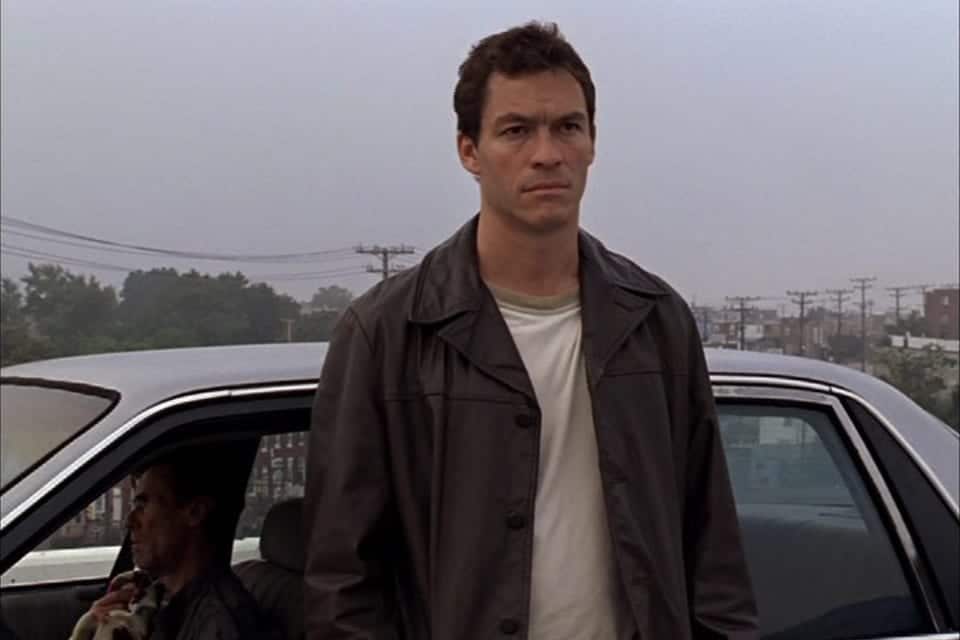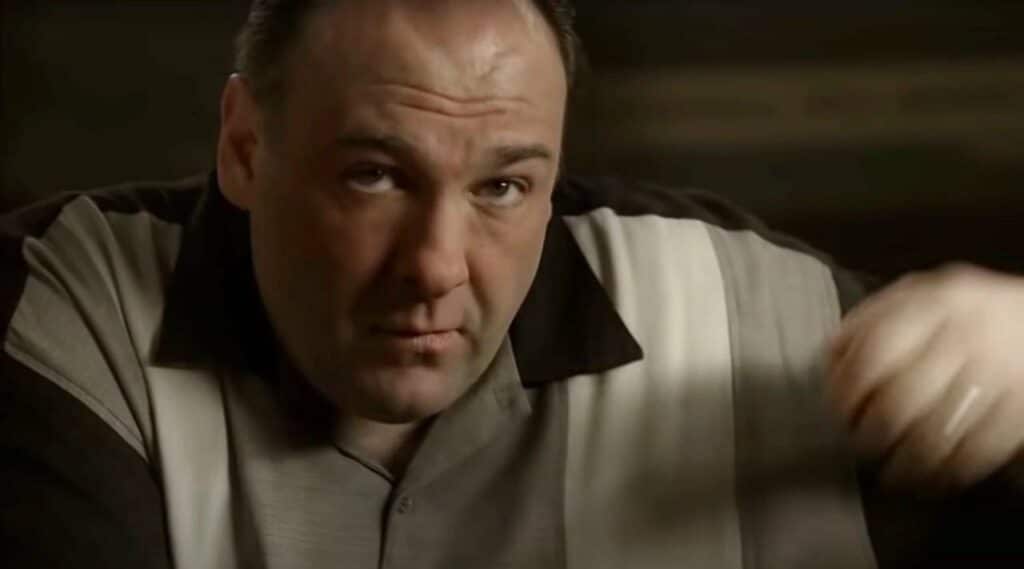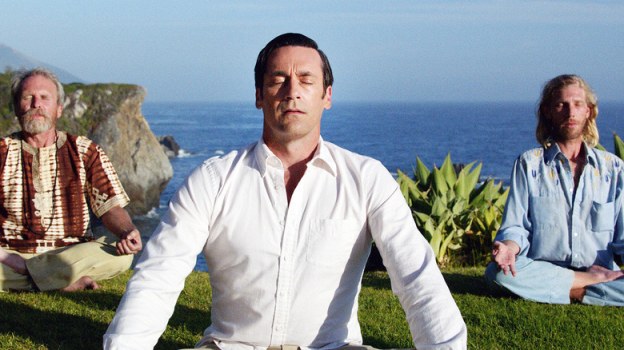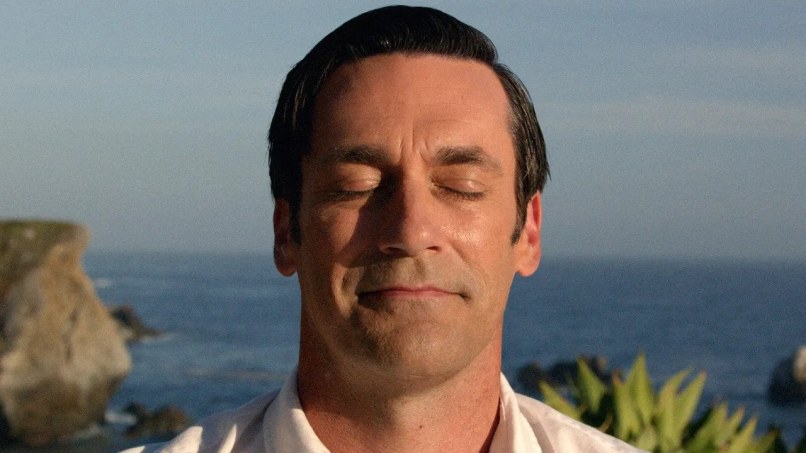* Clearly this article contains spoilers for the below-listed series’!
Table of Contents
- Breaking Bad – Character Arc
- The Wire – Theme and Setting
- The Sopranos – Tone and Character Perspective
- Fleabag – Subtext and Form
- Better Call Saul – Character Study
- Bojack Horseman – Character Relationships
- The Good Place – Premise and Character Arc
- Mad Men – Message and Context
- In Conclusion: What These Great Series Finales Teach Screenwriters
The Best Series Finales and What They Teach About Screenwriting
Breaking Bad – Character Arc
The Breaking Bad series finale manages to provide a climactic and dramatic ending and neatly and calmly wrap up the story arc. It’s the perfect example of how to keep the story feeling high stakes right till the end, whilst not rushing the storytelling.
Certainly, Breaking Bad‘s final few scenes are some of its most action-packed, in keeping with a show that puts the audience on their toes with its often clever and thrilling set-pieces.
Walt sets up a devastating machine-gun rig to kill the Neo-Nazi gang and free Jessie. It’s a remarkable set-piece drenched in bullets. But it’s also a satisfying culmination of Walt’s story arc. It’s the final piece in his mea culpa for all that he’s done.
- He’s provided Walt Jr with money in the future, secured Skyler as much as he can and freed Jessie from the clutches of the Neo-Nazis.
- Now, as we realize he’s been shot in the hail of bullets, he can die relatively safe in the knowledge that he did what he set out to do; make some amendments for his actions and secure his family members (and Jessie) as much as he can.
The Breaking Bad finale is an exercise in character arc completion. Walt is forced back into the fray after being in exile. But he needs to do this in order to try and make amends for his actions, as well as get one over those he holds no candle for once and for all. He entraps and threatens Gretchen and Elliot, and dispatches the Neo-Nazis.
It’s not exactly that Walt gets to win (he does die after all). However, Walt achieves a sense of completion, dying in the very place that was the arena of his success and ultimate downfall; the meth lab.
The Wire – Theme and Setting

The Wire finishes as it has gone on, with an overarching and all-encompassing view of Baltimore. This is somewhat seen through Jimmy’s perspective as he pulls up on the side of the road and takes in the city beneath him. But truly the perspective is that of the city.
The closing montage shows us, in a myriad of forms, time moving on. Some characters continue on as they always had been, some take the place of others, and some cope with change. However, what grinds on is the city itself. Characters fit into the different nooks and crannies that the city holds, for better or worse.
The Wire is a series that has been about characters surviving within systems and structures. So the ending, with its all-encompassing wide view of these systems and structures ticking on, is perfect. The Wire’s series finale demonstrates how to stay true to a series’ primary theme. It’s always a show with a razor-sharp focus on its thematic messaging. And the finale heightens this focus.
It makes us realize what the show has been about all this time. Whilst we get wrapped up in the series’ absorbing and fantastic character arcs and plot lines, the series is always, about the city of Baltimore itself. It’s no one particular character or storyline that takes center stage. Instead, it’s the cradle that holds these characters and storylines that takes center stage.
The Sopranos – Tone and Character Perspective

Where to begin with this dividing series finale? The Sopranos finale is still one of the most discussed series finales, many years after its air date. The sudden cut to black, apparently in the middle of the scene, is certainly bold. Some find it a brilliantly teasing end, some find it frustratingly ambiguous.
What is relatively inarguable, however, is how the series finale encapsulates the series’ tone, perhaps more than many even realize. What The Sopranos is always so good at is catapulting us into Tony’s emotionally turbulent mind and perspective. Whilst we see many different character perspectives throughout the series, Tony’s emotional state is at the forefront. This is not only because he is the protagonist but because his emotional state is what frames the series (being that it starts with him entering therapy).
Therefore, ending the series with an acute focus on Tony’s perspective is fitting for a series that has been so much about his inner world. The perspective here isn’t an objective one, as we don’t clearly see all the different facets of what is happening. The tone throughout the scene is instead, off-beat and strange. Cuts don’t quite seem to match up and there is an almost dream-like quality to the scene overall.
What happens to Tony? Is he shot dead? Or is this just the cut-off point for a story about the Sopranos family, ending in the middle of their story but encapsulating the dynamics at the heart of the family? Whatever theory you believe, the series finale illustrates how to complete a series in its overarching tone. We may not quite know what happened but we’re not left uncertain as to the series’ definitive style, wedded as it is to Tony’s inner conflict.
Fleabag – Subtext and Form

Fleabag is one of the best examples of how to effectively use fourth wall breaks and first-person narration. The titular character is our guide throughout the series, talking to us directly. It’s only in the second series that we gain an understanding of the purpose of the narration.
The series finale puts a full stop on this purpose. As Fleabag sits sorrowfully at a bus stop, she takes a small statue from her pocket.
- Fleabag was compelled to steal this statue from her stepmother throughout the series.
- But she is struck when she learns it was modelled on her late mother.
- The statue takes on a new importance, with Fleabag seemingly having an elemental pull to the object.
Now, at the finale, she takes the statue out and rests her head on it. A source of comfort, this seems to be a moment for Fleabag to connect with her mother. The series has always been subversively about Fleabag’s grief for her mother. And this is never clearer than at the series finale.
More importantly, as Fleabag moves away, she tells us to stay. This is the end of the series. She no longer needs us. And again, this seems to be about Fleabag’s grief. She is trying to move on and leaving us behind is an important step in that process. Were we, the audience, a substitute for Fleabag’s mother the entire time? Perhaps. Either way, in acknowledging her grief instead of running away from it, Fleabag is able to move on and away.
The Fleabag series finale is a fantastic example of how to accentuate subtext present in the narrative throughout the series. Everything calcifies in these final few moments, beautifully and perfectly for the story’s purpose.
Better Call Saul – Character Study

Better Call Saul ends bittersweetly, to say the least. It’s the perfect demonstration of character-driven storytelling coming to a brilliant end. The series, overall, is pretty tragic. And the series finale certainly doesn’t betray this tone.
Better Call Saul‘s entire purpose is to illustrate the fundamental flaws that keep Jimmy doing what he’s doing, to the point of self-destruction. What continually drives Jimmy? What is the depth of this seemingly cartoonish character? This is the series’ modus operandi. And the series finale absolutely stays true to this.
It serves up several insights into who Jimmy is, and probably always will be. It does this via several different timelines.
- His relationship with his brother, Chuck, is ever present and given time here.
- Then, his showboating lawyer skills are given space, coupled with a touch of humanity, especially in the face of Kim’s presence in the courtroom.
- Then, finally, Jimmy and Kim are shown together one last time, sharing a cigarette as they had done so many times as lawyers. Only this time, Jimmy is behind bars.
The Better Call Saul series finale defines Jimmy as he always was. A tragic set of circumstances plus his personality have led him here. And the patchwork of scenes and timelines in the series finale show this. Jimmy and Kim are in one sense, reunited. They’re on reasonably good terms now. But they’re obviously separated by Jimmy being in jail. So the series presents both a happy and tragic ending.
Better Call Saul is a brilliant and cohesive character study. And by staying true to Jimmy’s core characteristics in its series finale, the show brilliantly fills and concludes its brief.
Bojack Horseman – Character Relationships

The Bojack Horseman series finale illustrates how to wrap a series by focusing on the core character relationships that define the series. After initially believing Bojack might have died in the penultimate episode, we instead actually get a much more serene ending. Whilst we often, as audiences, clamor for a dramatic climax, sometimes a more gentle and realistic approach can be more effective.
The final episode almost acts as a checklist of rounding off all the character arcs. However, this is in terms of their relationship with Bojack most of all. This is, after all, what the series is about; the way that Bojack’s actions affect those around him. Bojack’s relationships are ultimately what saves him.
And so in this way, despite all the difficulties and pain, the series finale ends in a place of hope. This is especially the case in light of the penultimate episode, which at first appears to end in a place of despair. Instead, for a show where most of the characters are animals, Bojack Horseman ends in a very human way.
A series focused on depicting depression ends ultimately in a hopeful place, demonstrating that repair can be made to damaged relationships. What better way to represent this than via a series of honest conversations between the characters? All these conversations have a sense of resolution about them.
It’s a relatively straightforward series finale in this respect. And it illustrates how often the simplest route can be the most effective, avoiding the need for fireworks or twists and, instead, focusing on the character relationships.
The Good Place – Premise and Character Arc

The Good Place series finale loops back both to the series’ central premise and the main character arc. In Eleanor transitioning through the final door, she completes her journey. But more importantly, by seeming to transfer goodwill back on Earth via a glow of light, Eleanor brings good to the world.
This is truly the full circle completion of her character arc. She achieves redemption by doing the kind of small goodwill deed that she wouldn’t have done whilst alive. And this is, in essence, the series’ purpose; to show that redemption is within anyone’s reach.
The Good Place series finale achieves a double whammy in this regard.
- It keeps a sharp focus on the series’ central premise and theme.
- But it also ties this together with the character arc.
This is the perfect way to end a story. We inherit the resonance of the series theme through the character we’ve come to so intimately understand. This, in turn, makes the theme really hit home. We truly feel the series’ message. Redemption is possible because we’ve seen it tangibly happen to the protagonist.
Mad Men – Message and Context

Mad Men’s series finale provides its protagonist with a moment of peace. Or at least it seemingly does. A character who has been crying out for help, on the edge of suicide, seems to turn a corner. Does this finale provide Don with redemption? Or is it an indication that he has turned a corner in a different way?
As Don seems to reach enlightenment, we hear the chime of a bell and see Don breaking into a smile. We then transition to the famous 1971 Coca-Cola advert. The implication seems to be that Don came up with the idea for the ad in his transcendental state on the hilltop.
And this strikes as the heart of cynicism.
- Don appears to be reaching a state of peace.
- But what he’s really doing is creating the conditions for a new idea, potentially his best ever.
- Don takes this genuine moment and turns it into an advert.
What could be a better distillation of the advertising business? The series always has a clear idea of how it wants to present the advertising business to us. And this is as tangible in the finale as it is in any other place throughout the series. It perhaps arguably even reaches its height here.
Moreover, this series finale has an acute sense of the context circling around the story. And this is one of the elements that make the series so interesting, absorbing and meaningful. Mad Men encapsulates 1960s culture. And in taking a key aspect of it – the hippy culture – and showing how it was commercialised the series ties a bow on its depiction of the era.

In Conclusion: What These Great Series Finales Teach Screenwriters
All of the above series finales are different. But they all ultimately tie up their stories in a cohesive manner. It’s not easy to conclude hours of storytelling. But each one of these series finales keeps a laser focus on those core elements of the series’ initial purpose. In this respect, the focus is as clear as it should be in the first episode.
A great series finale is often a testament to a well-thought-out and well-conceived premise. Even if you don’t know exactly where your plot is going to go, you should have a sense of how your series ends broadly speaking.
What is the core character arc? What is the key theme that you want to convey? The route to a satisfying series finale lies in a convincing answer to these questions.
Moreover, consistency is key. You want to end your series as it began. This will be an especially impressive feat given the amount of distance typically between a first and last episode. But it will help in rounding off your series rewardingly for an audience.
Series finales most often disappoint when they feel like a betrayal of what has come before – a sudden change of tone, plot twist, hasty wrap-up or overt attempt to impress/shock. In contrast, the best series finales feel like they were there all along. The series should tell us how it will end from the start, not in its exact plot, but via its defining energy and purpose.
–What did you think of this article? Share It, Like It, give it a rating, and let us know your thoughts in the comments box further down…
– Struggling with a script or book? Story analysis is what we do, all day, every day… check out our range of script coverage services for writers & filmmakers.
Get *ALL* our FREE Resources
Tackle the trickiest areas of screenwriting with our exclusive eBooks. Get all our FREE resources when you join 60,000 filmmakers on our mailing list!

